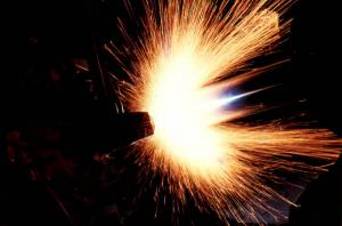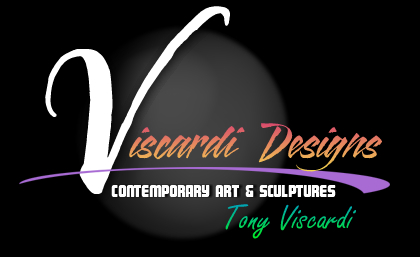"Technical Info"
THE NEON TUBES:
The neon tubes are hand-blown.
The color of the neon tube is determined by 3 factors:
1. The glass:
Clear or colored glass. The colored glass gives deeper and richer
colors and require more skill in bending.
2. Powder coatings inside the tube:
These are phosphorescent powders that glow specific colors when excited by
UV wavelenghts
3. The Gas:
There are six gases one can use in a neon tube.
Only two are bright enough to be used commonly:
NEON: lights orange-red
MERCURY(with argon or neon): lights light blue
Other gases less commonly employed are:
Argon: lights pale lavender
Helium: lights a ple peach color
Krypton: lights pale silver
XENON: lights pale deep blue
The color of the gas interacts with the glass and the powders to determine the final color of the tube.
Life Span
The life span of a neon tube can be expected to be 20+ years although this may not be the case for every tube. The tubes generally need to be replaced rather than repaired if bad or broken. Neon tubes are fragile but not overly-so.
The Metal:
The metal is usually aluminum. The silver aluminum has been coated with multiple layers of clear polyurethane coating which is applied after the aluminum is hand brushed or ground to create the reflection patterns. The colored alminum is coated with multiple layers of either opaque or translucent paint then over-sprayed with clear coats to provide depth. These finishes should provide stable color to last for years with minimal maintenance.
CLEANING
When cleaning, the pieces should first be unplugged and the tubes allowed to
cool to room tempature. They can then be cleaned by using a soft cotton cloth
(a T-shirt is ideal) dampened with water. Paper towles are too abrasive and may scratch the finish. For troublesome grime buildup or smoke etc., a glass cleaner
can be used. Do not apply solvents of any type to the aluminum as they may damage
the finish. Frequent dusting is recommended using a soft clean paint brush or
feather duster.
Sculpture Power Consumption:
Neon is the most effecient form of light available - it does not consume large amounts
of electricity. My sculptures operate at a level between 30 - 150 watts depending on the piece. They can be safely left on 24 hours/day at minimal expense if desired.
Repair:
Most works have exact patterns of its neon tubes reproduced on a sheet of butcher paper which is clamped to the back of the sculpture. In the event of a broken tube, this pattern can be removed and taken to any local neon shop or returned to the artist for replacement. Installation of the new tube can be done by any local neon shop and should be done only by an experienced neon technician (Although the average individual can often be led through the simple process by phone with the artist if desired). All works are produced in a fashion that they can be taken apart and repaired with ease.
Foreign/Overseas Clients:
Transformers are available to match with any country's elctrical type including 220V.
A nominal handling charge to switch transformers will be applied. Sculptures have been
shipped to Europe without incident multiple times in the past by the artist.
Shipping:
Some pieces require careful crating before shipping. The artist has often used Fragile Pack without incident in Louisville Ky. A typical shipping charge for a 32" x 48" piece including crating and insurance from Louisville to San Francisco is about $125.00 and to France or Germany about $275.00. Sometimes multiple pieces can be placed in the same crate and can greatly reduce the cost of the shipping per piece.
Click here to add text.
Tony Viscardi



